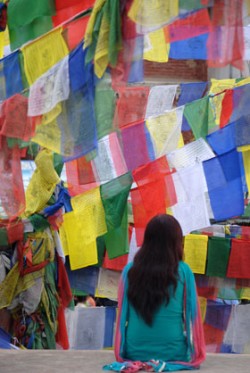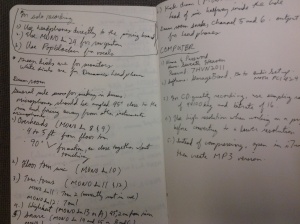So by now everybody knows about the shit-storm blowing around social media involving Manny Pacquiao, the LGBT community, and those who support either side. Personally, I support marriage equality – but I won’t go into detail about that here. I just want to briefly sort out my thoughts and feelings about practicing the Buddhist precept of Right Speech via social media.
To make it really brief, it is freaking hard. It is hard enough to practice it in the physical world, but there’s something about posting on social media that seems to bring out the worst in people. Maybe it’s just so much easier to be a keyboard warrior. After all, nobody’s going to jump out of your screen and punch you in the face if you piss them off online. On the other hand, it is also so much easier to read something that offends you, and then pause and take a breath or two before you type. And if you can do that, then your chances of sounding even remotely intelligent are higher. But damn, the temptation to give a virtual middle finger can be so strong at times.
Right Speech is a challenging precept to keep. And about the only thing I can say is, I will always need practice in this area.
**************
There’s a part in Neil Gaiman’s “Death and The High Cost Of Living” where the main character is narrating about “The Spirit of the Stairway” or something like that, which is basically all the cool shit you could have said but didn’t think of saying in a conversation, and that are occupying your mind now that you have left the conversation, and you’re going down the stairs (Why it has to be going downstairs and not upstairs, and why it has to involve stairs at all – I don’t know). It’s the conversation you wish you had but didn’t.
I was attending a birthday party last night, and there was a group of young filmmakers interviewing people for something they called the Happiness Project (or Project Happiness? Something Happiness – I don’t know, I had a lot of wine). Anyway, they interviewed me briefly about my thoughts on happiness, and I did my best in my less than sober state to give a somewhat sensible answer. The thing is, now that I am completely sober, I can’t help but think, “Damn, I could have explained it more clearly!” So here’s the answer I wish I gave, but didn’t.
Happiness, to me, can be likened to the peak of a wave, while its opposite can be likened to the valley of a wave. This up-and-down movement is perfectly natural. Which is why chasing after happiness doesn’t really work. You’re basically going against nature. It’s like insisting on breathing in air, then refusing to let it out because dammit, you really like air, air is good for you, and therefore “I’m just gonna keep on taking in more and never let it out.” I trust that you’re all wise enough not to try that, by the way.
So if you want to be happy, the best advice I can give is don’t even try. Yup, don’t even try. Especially do not try to be happy all the time. Trying to do that is like trying to control the waves of the ocean. Instead, just relax and ride the waves – like surfers do.
How do you do that?
Forget about happiness. Forget about sadness. I don’t mean push them away – “Oh I will neither be happy nor sad. I will become an emotionless robot.” Nope, that doesn’t work. What I mean is, let them come when they come, and let them go when they go.
“But how do I that?” you ask. I can answer that in two words: Be kind.
Happiness and sadness appear and disappear like the waves of the ocean, but no matter what you’re feeling you always have the opportunity to be kind. That’s why instead of focusing on happiness, focus on being kind. Like, what’s the kindest thing you can do for yourself right now? What’s the kindest thing you can do for others right now? For the world right now?
The interesting thing is the more you do this, the more you practice this, and the less interested you become in selfishly pursuing happiness, the easier it becomes to be happy. It’s not that happiness will just come to you as a reward for your good behavior – it’s more that by forgetting yourself, you relax. And when you relax, then your movement becomes more natural, and riding the waves is not so much of a struggle. It’s when you try to hold on to any positive emotional state while pushing away negative states, that you tense up. And when that happens, riding becomes difficult. But when you focus on just being kind regardless of what you’re feeling, then you forget yourself, and you’re now able to freely ride the waves of life.



